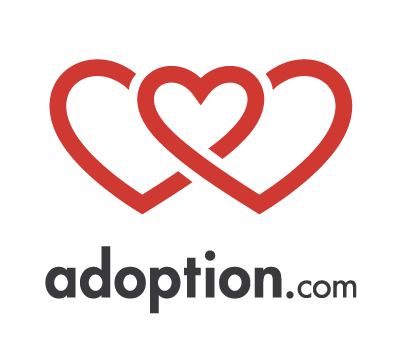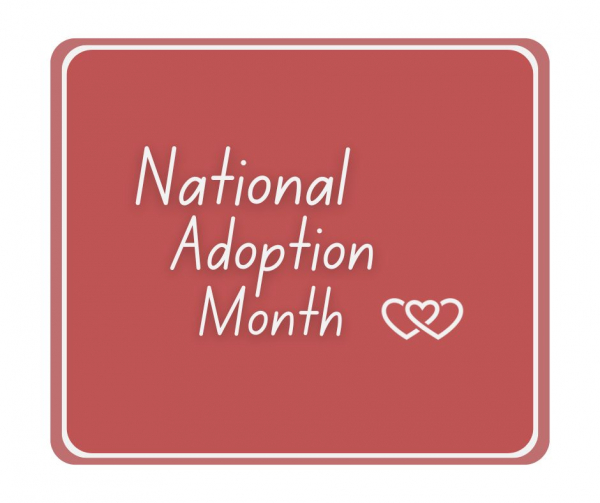Open Adoption: An Interview With A Birth Mom And Adoptive Mom

When we share how our family was built by domestic infant adoption, a popular question is always whether we still see their birth moms.
The answer: Yes, of course we do! And no, it is not confusing.
False assumptions about what open adoptions look like stem from the secrecy and “closed” adoptions that were the norm in previous generations. In our family’s case, we all live in the same metropolitan area and have been able to cultivate wonderful relationships with both of our children’s birth families.
In an attempt to demystify the concept of openness in adoption, I am thrilled to team up with my dear friend Jaye—who also happens to be birth mom to our almost two-year-old son! Jaye is gracious to share about her experience, and is one of the most incredible women I know. I am honored to share my motherhood with both my children’s birth mothers.
The following are questions and answers about openness in adoption from myself (Stacey, adoptive mom) and Jaye (birth mom).
What did you think about open adoption before placement? What were your fears or expectations?
Stacey: When we met Jaye, it was our second adoption. We had a 3 year old already and had (and still have!) a very open adoption with her birth family, too. When we began the adoption process again I really hoped to have a similar relationship with our next child’s family. I worried about how a difference in levels of openness would affect our kids—if we were very close to one and not the other. My husband and I both desired another very open adoption, but we knew going into it that it would depend on what an expectant mom wanted too.
Jaye: I had heard and researched that open adoption has been seen to be better for adoptees, but I hadn’t had any experience so I wasn’t sure how open of an adoption I wanted. I didn’t know if an open adoption would make it harder or easier. I didn’t know what to expect, but I did have fear that seeing my son would be too hard, and I feared his adoptive family would eventually break contact. Thankfully those fears dissipated quickly once I met and knew his adoptive family.
How did you come to an agreement on what sort of relationship or contact to have?
Stacey: I’ve been asked this before, and it is difficult to answer because there is no official agreement. (Or as Jaye reminded me, there is an agreement we worked on with our social worker—but things have occurred more naturally.) Thankfully I don’t feel it’s necessary in our situation. Openness is not something we have to do, it is something we get to do.
Jaye: I don’t feel like we really did—just kind of played it by ear. Once my role was defined as family, our relationship naturally developed without actually discussing it.
How do things look today?
Stacey: When people ask me what our relationship is like with our children’s birth moms, I usually say, “Pretty much like any other friend or family member!” We text and stay in touch on social media, and hang out regularly. Just like with our other friends or family, it isn’t always scheduled. Sometimes adoptive parents are nervous to share personal information about themselves, but the way I see it is that Jaye trusted us enough to parent her son. In return, we are more than able to trust her with things like our phone number and address.
Jaye: I feel like my son’s adoptive family adopted me too, and they have always treated me like family, which has meant a lot. I have found it to be easier the more I see him, and I have the security of asking to hang out whenever I want. As Stacey said, we are all family and I see no difference in planning activities with them than I do with my other family members.
Stacey: One of the best things about open adoption for our family is how our circle has grown beyond our children. We get to know and have a relationship with their birth moms, grandparents, aunts, and uncles. There are more people to love our kids. We love their birth moms not out of obligation, but for who they are as individuals. One of the challenging things about openness is that you have a front row seat to the bittersweet of adoption. We are profoundly aware that as we gained a son, his birth mom experienced deep loss. It is a strange place to be—a sincere gratefulness and love as a parent, and also caring so much for his first mom that I wish she never had to experience this kind of pain to begin with.
Jaye: The best is that I get to see him grow up and be a part of his life, and that I have this whole other family to share life with! The most challenging is the loss. I haven’t had any sense of regret, but I still have pain. Making an adoption plan for my son was the hardest thing I’ve ever done, but has also been the most beautiful. It’s a weird balance sometimes, because I’m happy how everything turned out but I still have hurt because of it.
What advice do you have for anyone fearful of openness?
Stacey: Prospective adoptive parents need to do the heavy lifting of discerning why openness scares them. Is it jealousy? False stereotypes? Not wanting to “share?” Barring a true issue of trauma or safety, research tells us that some degree of openness is best for the adoptee. At its core, adoption is about “sharing.” Our kids come from a family of origin and that cannot be erased or ignored.
Jaye: Like any new relationship, there is an adjustment period and everyone has to learn their new roles. Communication is key and knowing what to expect helped me. Stacey was good at sharing their willingness to spend time with me while still giving me room to process and grieve. I think the best way to look at adoption relationships is like family, because that’s what it is.
How has open adoption been a good thing for you? How do you think it will affect your child(ren)?
Stacey: I have joked before about how lucky I am to have someone (besides their dad) who is just as crazy about my kids as I am! Whenever they meet a milestone or do something special, one of the first things I want to do is share that with their birth moms. I hope both our children grow up feeling confident in their story and whole—knowing that they do not have to choose between their biological family and their adoptive family. We’re all on the same team, and we’re all in it for the same reason—which is for them. As our daughter has gotten older (she has a different birth mom who we are also close to), I am glad I can answer her questions and facilitate a relationship with her birth family. When she tells me, “I want to talk to [my birth mom],” I can say, “Great! Me too! Let’s call her.”
Jaye: I cannot imagine not having an open adoption now that I’ve experienced it. When I was pregnant I wasn’t sure how much I wanted to see my son. I was afraid seeing him would make it more difficult, but I’ve now realized it makes it easier. I can’t get enough of him! Stacey has helped my transition and experience immensely, simply by being open with me and available. Stacey and her family have treated me like any other family member, which has been really good for me. Fear of abandonment or loss of a relationship with my son has never been an issue, which is extremely important in an open adoption relationship.
Jaye, is there anything you want people to understand about women who have placed their baby for adoption?
Jaye: I’ve been lucky to have a ton of support regarding my decision to place my son for adoption. I’m thankful I haven’t had many people question my decision or intention. I think the most beneficial thing for birth moms is for people to understand their decision was out of love, and that birth moms will never “get over” it. Placing a child for adoption is a life-long journey, and although so much good comes out of it, there will always be loss too.







